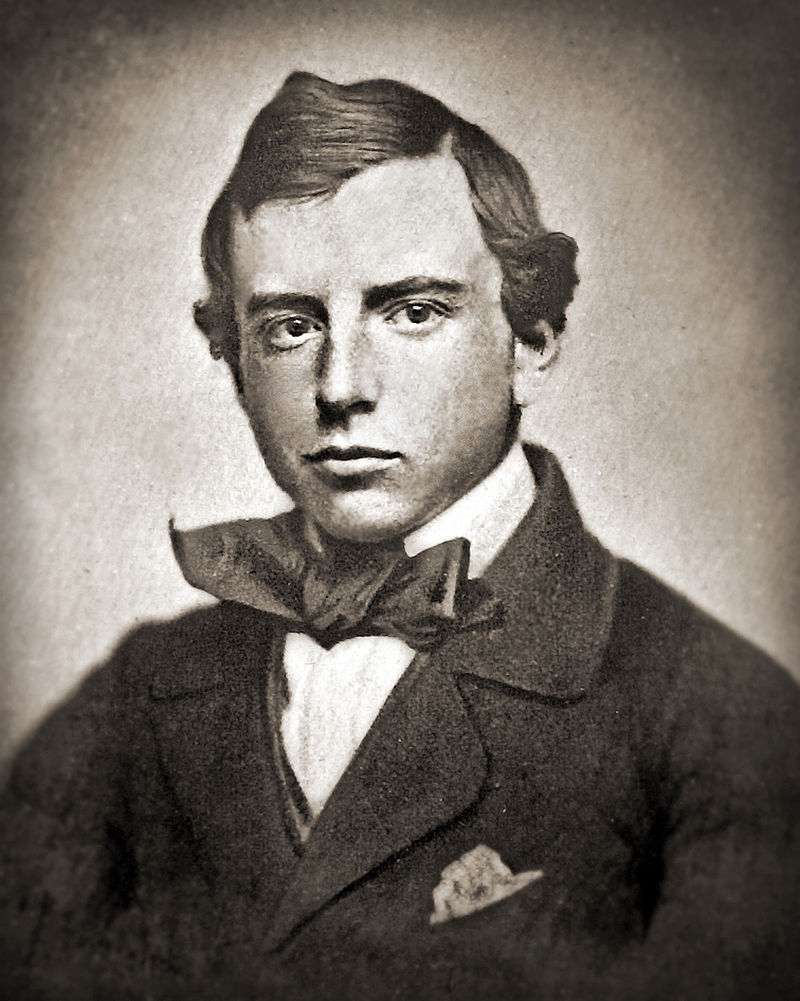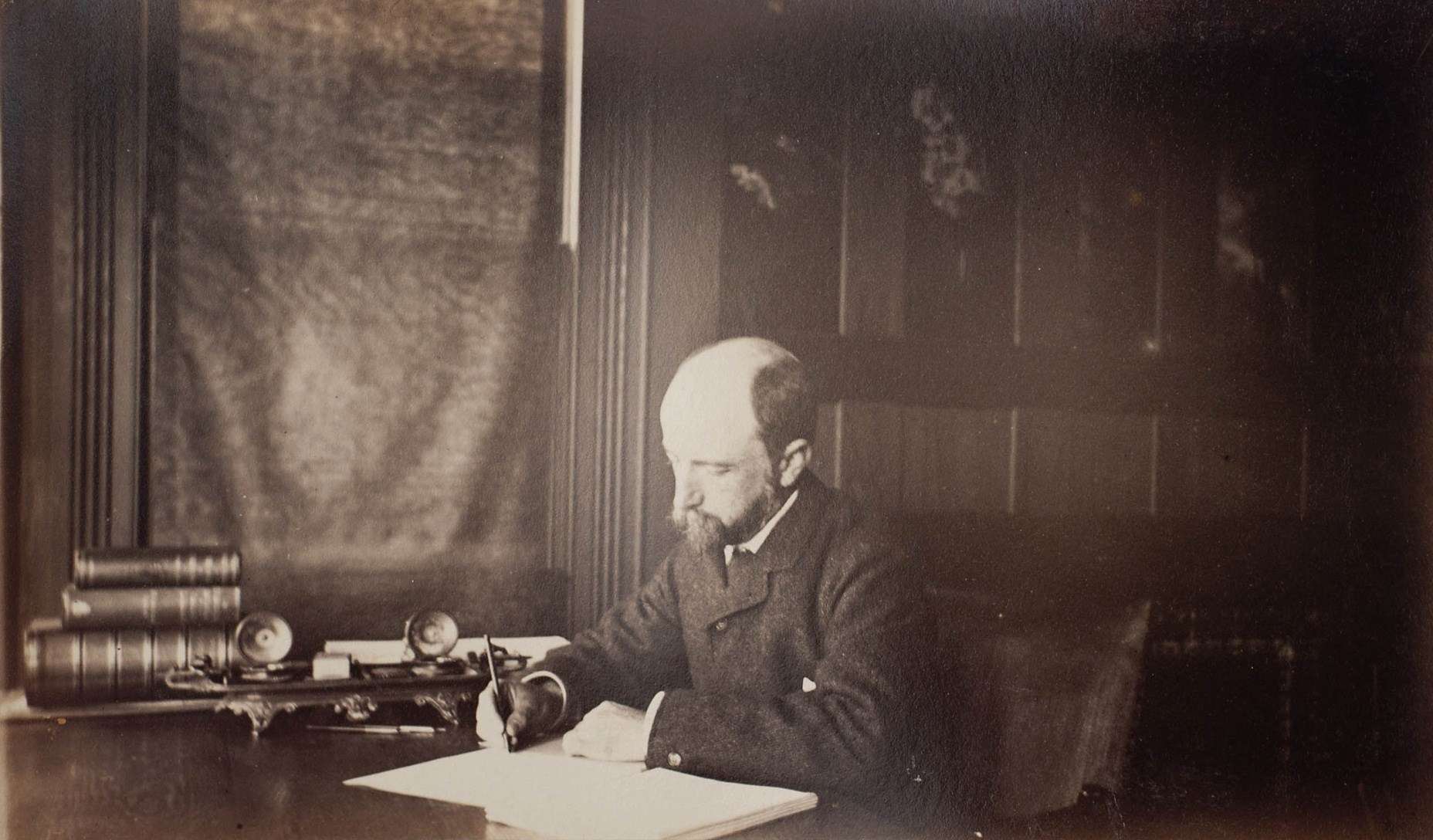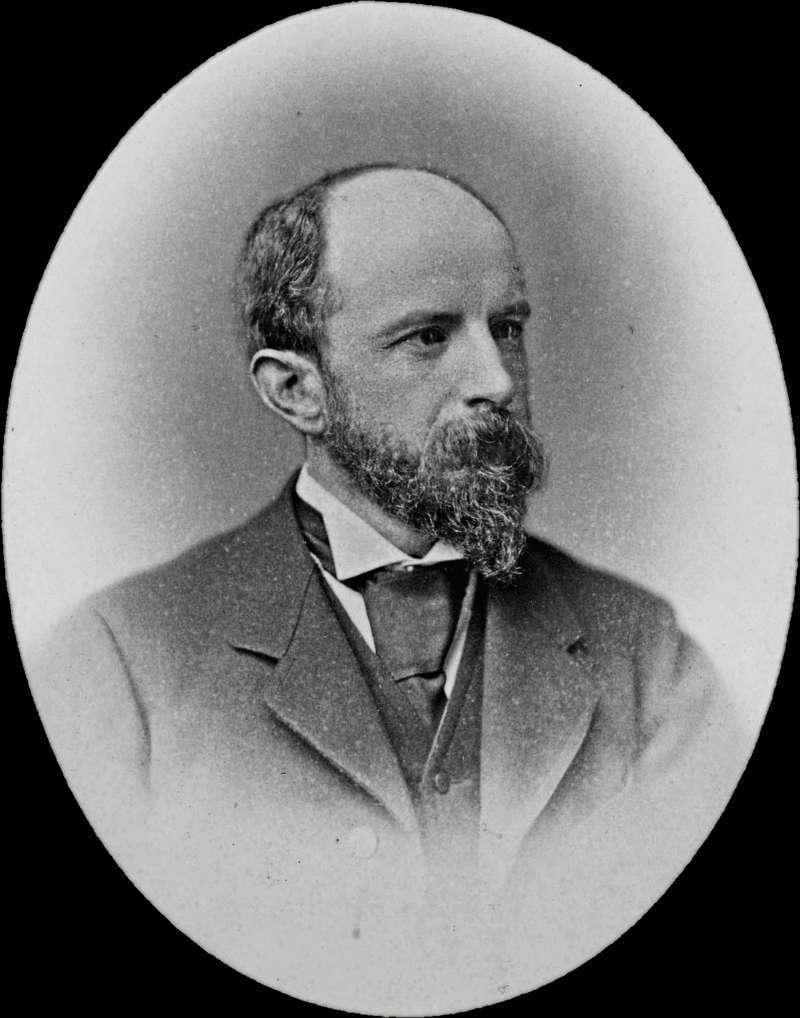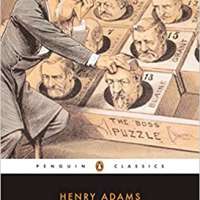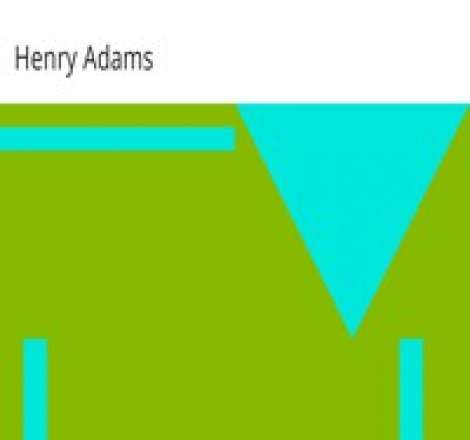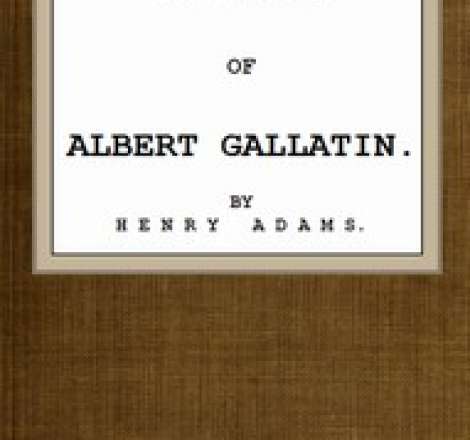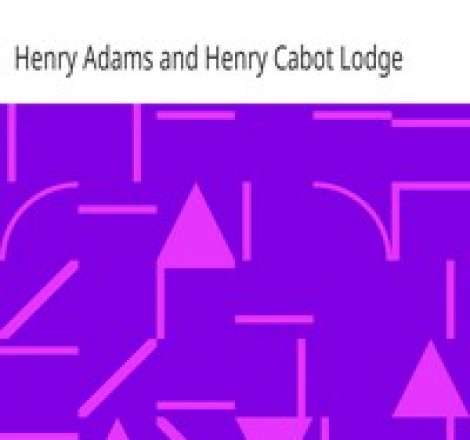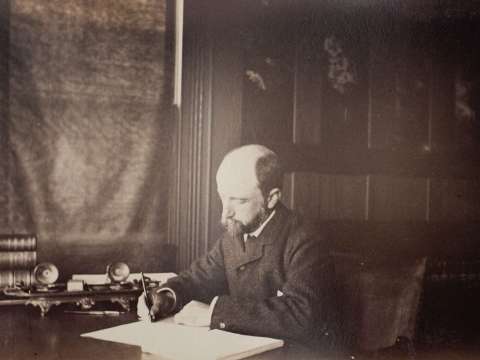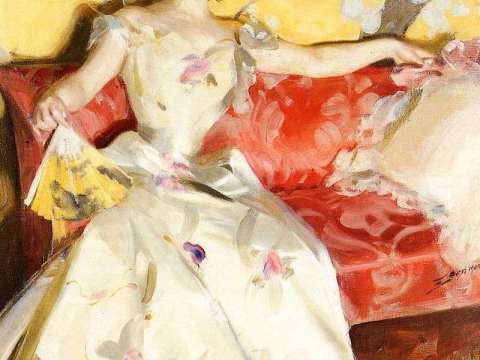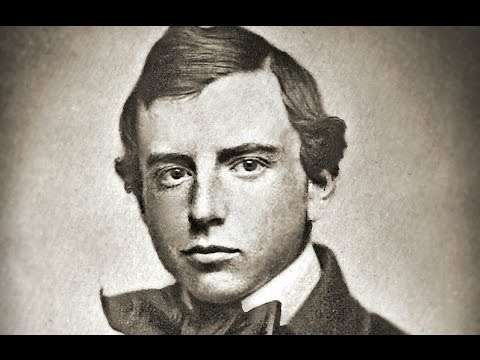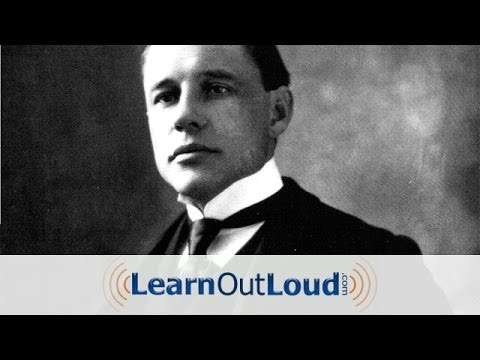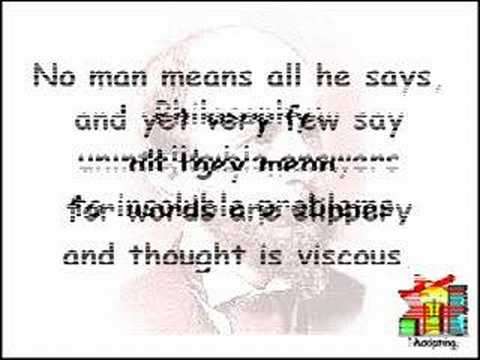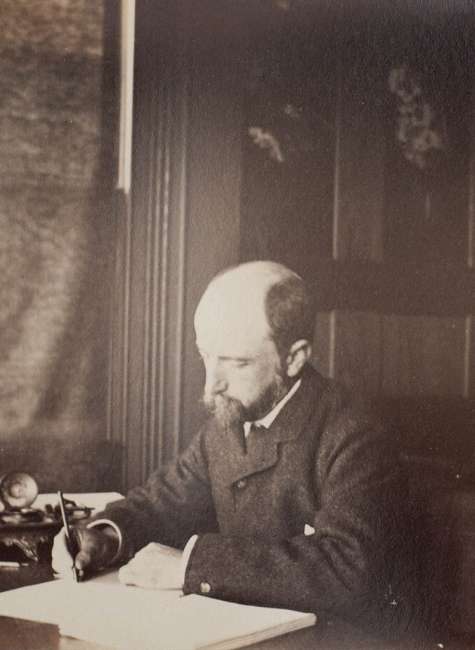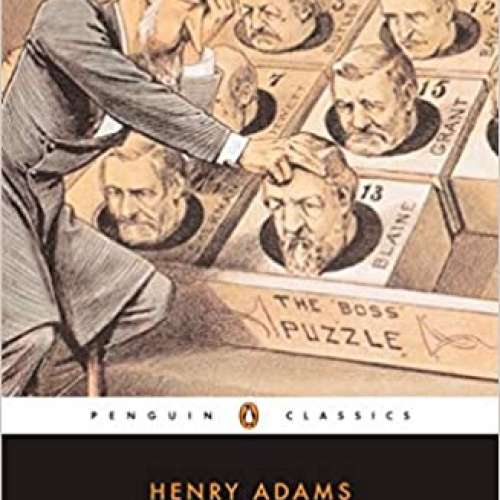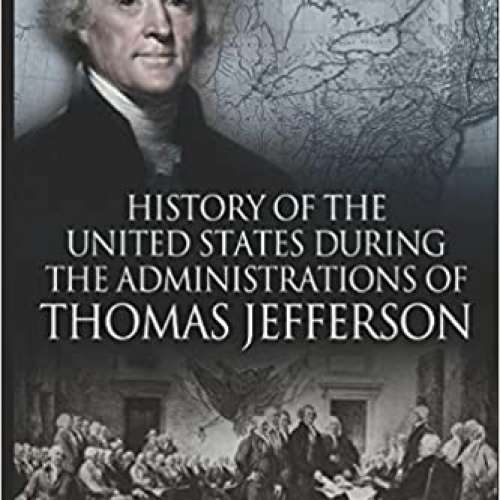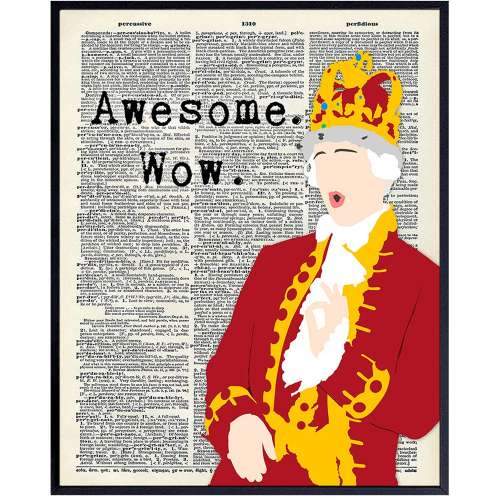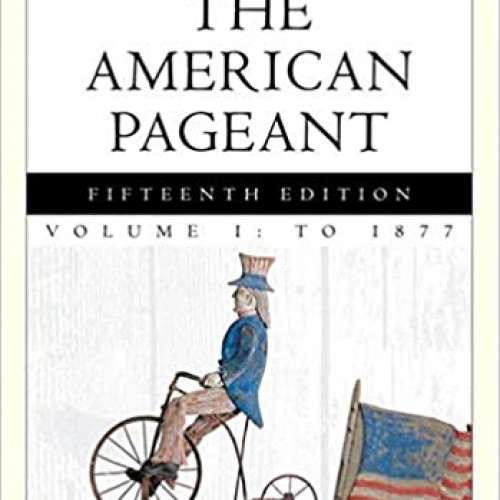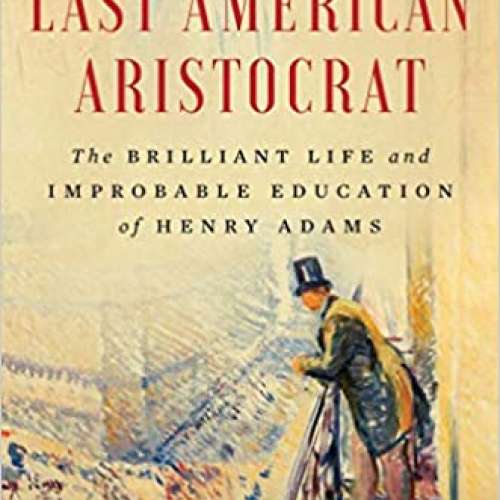

Henry Adams (1838-1918)
Chaos often breeds life, when order breeds habit.
Henry Brooks Adams was an American historian and member of the Adams political family, descended from two U.S. Presidents. As a young Harvard graduate, he was secretary to his father, Charles Francis Adams, Abraham Lincoln's ambassador to the United Kingdom. The posting influenced the younger man through the experience of wartime diplomacy, and absorption in English culture, especially the works of John Stuart Mill. After the American Civil War, he became a political journalist who entertained America's foremost intellectuals at his homes in Washington and Boston.
During his lifetime, he was best known for The History of the United States of America During the Administrations of Thomas Jefferson and James Madison, a nine-volume work, praised for its literary style.
His posthumously published memoir, The Education of Henry Adams, won the Pulitzer Prize and went on to be named by the Modern Library as the best English-language nonfiction book of the 20th century.
Early life
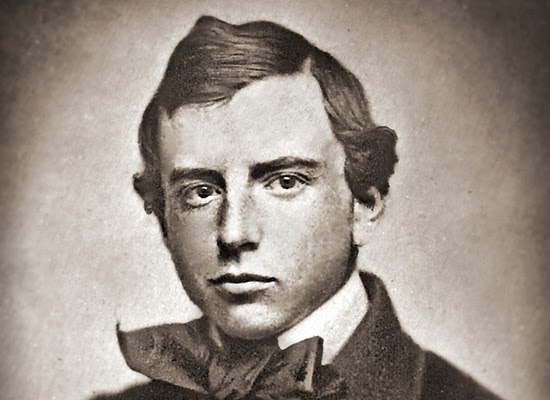
He was born in Boston on February 16, 1838, into one of the country's most prominent families. His parents were Charles Francis Adams, Sr. 1807–1886, and Abigail Brooks 1808–1889. Both his paternal grandfather, John Quincy Adams, and great-grandfather, John Adams, one of the most prominent among the Founding Fathers, had been U.S. Presidents. His maternal grandfather, Peter Chardon Brooks, was a millionaire. Another great-grandfather, Nathaniel Gorham, signed the Constitution.
After his graduation from Harvard University in 1858, he embarked on a grand tour of Europe, during which he also attended lectures in civil law at the University of Berlin. He was initiated into the Phi Kappa Psi fraternity as honorary member at the 1893 Columbian Exposition by Harris J. Ryan, a judge for the exhibit on electrical engineering. Through that organization, he was a member of the Irving Literary Society.
During the Civil War
Adams returned home from Europe in the midst of the heated presidential election of 1860. He tried his hand again at law, taking employment with Judge Horace Gray's Boston firm, but this was short-lived.
His father, Charles Francis Adams, Sr., was also seeking re-election to the US House of Representatives. After his successful re-election, Charles Francis asked Henry to be his private secretary, continuing a father-son pattern set by John and John Quincy and suggesting that Charles Francis had chosen Henry as the political scion of that generation of the family. Henry shouldered the responsibility reluctantly and with much self-doubt. " had little to do", he reflected later, "and knew not how to do it rightly."
During this time, Adams was the anonymous Washington correspondent for Charles Hale's Boston Daily Advertiser.
London 1861–68
On March 19, 1861, Abraham Lincoln appointed Charles Francis Adams, Sr. United States Ambassador to the United Kingdom. Henry accompanied his father to London as his private secretary. He also became the anonymous London correspondent for the New York Times. The two Adamses were kept very busy, monitoring Confederate diplomatic intrigues and trying to obstruct the construction of Confederate commerce raiders by British shipyards see Alabama Claims. Henry's writings for the Times argued that Americans should be patient with the British. While in Britain, Adams was befriended by many noted men, including Charles Lyell, Francis T. Palgrave, Richard Monckton Milnes, James Milnes Gaskell, and Charles Milnes Gaskell. He worked to introduce the young Henry James to English society, with the help of his closest and lifelong friend Charles Milnes Gaskell and his wife Lady Catherine nee Wallop.

While in Britain, Henry read and was taken with the works of John Stuart Mill. For Adams, Mill's Considerations on Representative Government showed the necessity of an enlightened, moral, and intelligent elite to provide leadership to a government elected by the masses and subject to demagoguery, ignorance, and corruption. Henry wrote to his brother Charles that Mill demonstrated to him that "democracy is still capable of rewarding a conscientious servant." His years in London led Adams to conclude that he could best provide that knowledgeable and conscientious leadership by working as a correspondent and journalist.
Return to America
In 1868, Adams returned to the United States and settled in Washington, DC, where he began working as a journalist. Adams saw himself as a traditionalist longing for the democratic ideal of the 17th and 18th centuries. Accordingly, he was keen on exposing political corruption in his journalism.
Harvard professor
In 1870, Adams was appointed professor of medieval history at Harvard, a position he held until his early retirement in 1877 at 39. As an academic historian, Adams is considered to have been the first in 1874–1876 to conduct historical seminar work in the United States. Among his students was Henry Cabot Lodge, who worked closely with Adams as a graduate student.
Adams was elected a Fellow of the American Academy of Arts and Sciences in 1875.
Author
Adams's The History of the United States of America 1801 to 1817 9 vols., 1889–1891 is a highly detailed history of the Jefferson and Madison administrations with a focus on diplomacy. It has been called "a neglected masterpiece" by Garry Wills, and "a history yet to be replaced" by C. Vann Woodward.
Wide praise was given for its literary merit, especially the opening five chapters of volume 1, describing the nation in 1800. These chapters have also been criticized; Noble Cunningham states flatly, "Adams misjudged the state of the nation in 1800." In striving for literary effect, Cunningham argues, Adams ignored the dynamism and sophistication of the new nation.
In the 1880s, Adams wrote two novels, starting with Democracy, which was published anonymously in 1880 and immediately became popular. Only after Adams's death did his publisher reveal his authorship. His other novel, published under the nom de plume of Frances Snow Compton, was Esther, whose heroine was believed to be modeled after his wife.

In 1884, Adams was elected a member of the American Antiquarian Society. In 1892, he received the degree LL.D., from Western Reserve University. In 1894, Adams was elected president of the American Historical Association. His address, entitled "The Tendency of History", was delivered in absentia. The essay predicted the development of a scientific approach to history, but was somewhat ambiguous as to what this achievement might mean.
In 1904, Adams privately published a copy of his "Mont Saint Michel and Chartres", a pastiche of history, travel, and poetry that celebrated the unity of medieval society, especially as represented in the great cathedrals of France. Originally meant as a diversion for his nieces and "nieces-in-wish", it was publicly released in 1913 at the request of Ralph Adams Cram, an important American architect, and published with support of the American Institute of Architects.
He published The Education of Henry Adams in 1907, in a small private edition for selected friends. Only following Adams's death was The Education made available to the general public, in an edition issued by the Massachusetts Historical Society. It ranked first on the Modern Library's 1998 list of 100 Best Nonfiction Books and was named the best book of the 20th century by the Intercollegiate Studies Institute, a conservative organization that promotes classical education. It was awarded the Pulitzer Prize in 1919.
Some center-right intellectuals view the book critically. Conservative journalist Fred Siegel considered the worldview expressed therein to be rooted in resentment of America's middle class. "Henry Adams," wrote Siegel, "grounded the intellectual's alienation from American life in the resentment that superior men feel when they are insufficiently appreciated in America's common-man culture."
Personal life
Relations
Brothers
John Quincy Adams II 1833–1894 was a graduate of Harvard 1853, practiced law, and was a Democratic member for several terms of the Massachusetts general court. In 1872, he was nominated for vice president by the Democratic faction that refused to support the nomination of Horace Greeley.
Charles Francis Adams Jr. 1835–1915 fought with the Union in the Civil War, receiving in 1865 the brevet of brigadier general in the regular army. He became an authority on railway management as the author of Railroads, Their Origin and Problems 1878, and as president of the Union Pacific Railroad from 1884 to 1890.
Brooks Adams 1848–1927 practiced law and became a writer. His books include The Law of Civilization and Decay 1895, America's Economic Supremacy 1900, and The New Empire 1902.
Social life and friendships
Adams was a member of an exclusive circle, a group of friends called the "Five of Hearts" that consisted of Henry, his wife Clover, geologist and mountaineer Clarence King, John Hay assistant to Lincoln and later Secretary of State, and Hay's wife Clara.
https://docs.google.com/document/d/1YiQSJdMczEBneKZ3o1blCkejRz3v62IBA0uhq-oNxxg/edit
One of Adams's frequent travel companions was the artist John La Farge, with whom he journeyed to Japan and the South Seas.
From 1885 until 1888, Theodore Frelinghuysen Dwight 1846–1917, the State Department's chief librarian, lived with Adams at his home at 1603 H Street in Washington, D.C., where he served as Adams's literary assistant, personal secretary, and household manager. Dwight would go on to serve as archivist of the Adams family archives in Quincy, Massachusetts; director of the Boston Public Library; and U.S. Consul at Vevey, Switzerland.
Marriage to Marian "Clover" Hooper
On June 27, 1872, Adams married Clover Hooper in Beverly, Massachusetts. They spent their honeymoon in Europe, much of it with Charles Milnes Gaskell at Wenlock Abbey, Shropshire. Upon their return, he went back to his position at Harvard, and their home at 91 Marlborough Street, Boston, became a gathering place for a lively circle of intellectuals. In 1877, his wife and he moved to Washington, DC, where their home on Lafayette Square, across from the White House, again became a dazzling and witty center of social life. He worked as a journalist and continued working as a historian.
Her suicide
On Sunday morning, December 6, 1885, after a late breakfast at their home, 1607 H Street on Lafayette Square, Adams's wife, Marian Hooper Adams, known in her circle as Clover, went to her room. Adams, troubled by a toothache, had planned to see his dentist. While departing his home, he was met by a woman calling to see his wife. Adams went upstairs to her room to ask if she would receive the visitor and found his wife lying on a rug before the fire; an opened vial of potassium cyanide, which Clover had frequently used in processing photographs, lay nearby. Adams carried his wife to a sofa, then ran for a doctor. Shortly thereafter, Dr. Charles E. Hagner pronounced Clover dead.

Much speculation and numerous theories have been given concerning the causes of Clover Adams's suicide. Her death has been attributed to depression over her father's death. Her suicide was also related to a family history of mental depression and suicide, a sense of frustration and lack of fulfillment as a cultured person and as a woman, and a feeling of intellectual inferiority over her husband's interest in and attention to another woman. The possibility of determining the validity of any or all of these causes was made more difficult by Henry Adams's destruction of most of Clover's letters and photos following her death. In addition, a profound silence about his wife after her suicide and the conspicuous absence of any reference to her in his autobiography, The Education of Henry Adams, further contributed to an atmosphere of suspicion and mystery.
A teacher affects eternity; he can never tell where his influence stops.
Henry, his brother, Charles Francis Adams, Clover's brother Edward, and her sister Ellen, with her husband Ephraim Gurney, were the attendees at a brief funeral service held on December 9, 1885, at the house on Lafayette Square. Interment services followed at Rock Creek Cemetery, but the actual burial was postponed until December 11, 1885, because of the inclement weather. A few weeks later, Adams ordered a modest headstone as a temporary marker.
Relationship with Elizabeth Sherman Cameron
Henry Adams first met Elizabeth Cameron in January 1881 at a reception in the drawing-room of the house of John and Clara Hay. Elizabeth was considered to be one of the most beautiful and intelligent women in the Washington area. Elizabeth had grown up as Lizzie Sherman, the daughter of Judge Charles Sherman of Ohio, the niece of Secretary of the Treasury John Sherman in Hayes's cabinet, and the niece of General William Tecumseh Sherman. Her family had pressured Lizzie into a loveless marriage but brokered a prenuptial agreement with Senator J. Donald Cameron which provided her with the income from $160,000 worth of securities, a very large amount in 1878, equivalent to about $3,970,000 worth in 2017. The arranged marriage on May 9, 1878, united the reluctant 20-year-old beauty with a 44-year-old widower with six children. Eliza, his eldest, who had served as her father's hostess, was now displaced by a stepmother the same age. The children never accepted her. The marriage was further strained by the Senator's coarseness and indifference and his fondness for bourbon.
Henry Adams initiated a correspondence with Lizzie on May 19, 1883, when her husband and she departed for Europe. That letter reflected his unhappiness with her departure and his longing for her return. It was the first of hundreds to follow for the next 35 years, recording a passionate yet unconsummated relationship. On December 7, 1884, one year before Clover's suicide, Henry Adams wrote to Lizzie, "I shall dedicate my next poem to you. I shall have you carved over the arch of my stone doorway. I shall publish your volume of extracts with your portrait on the title page. None of these methods can fully express the extent to which I am yours."

Adams's wife, Clover, who had written a weekly letter to her father throughout her marriage except for the brief hiatus during her breakdown along the Nile, never mentioned concerns or suspicions about Henry's relationship with Lizzie. Nothing in the letters of her family or circle of friends indicates her distrust or unhappiness with her husband in this matter. Indeed, after her death, Henry found a letter from Clover to her sister Ellen which had not been posted. The survival of this letter was assured by its contents which read, "If I had one single point of character or goodness, I would stand on that and grow back to life. Henry is more patient and loving than words can express—God might envy him— he bears and hopes and despairs hour after hour—Henry is beyond all words tenderer and better than all of you even."
Chaos was the law of nature; Order was the dream of man.
On Christmas Day 1885, Adams sent one of Clover's favorite pieces of jewelry to Cameron, requesting that she "sometimes wear it, to remind you of her."
Later life and travels
Just before the end of 1885, Adams moved into his newly completed mansion next door at 1603 H Street Figure 1, B designed by his old friend, Henry Hobson Richardson, one of the most prominent architects of his day.
Following his wife's death, Adams took up a restless life as a globetrotter, traveling extensively, spending summers in Paris and winters in Washington, where he commissioned the Adams Memorial, designed by sculptor Augustus Saint-Gaudens and architect Stanford White for her gravesite in Rock Creek Cemetery.
Death and burial
In 1912, Adams suffered a stroke, perhaps brought on by news of the sinking of the Titanic, for which he had return tickets to Europe. After the stroke, his scholarly output diminished, but he continued to travel, write letters, and host dignitaries and friends at his Washington, DC, home. Henry Adams died at age 80 in Washington, DC. He is interred beside his wife in Rock Creek Cemetery, Washington, DC.
Views
Anglo-Saxonism
Considered a prominent Anglo-Saxonist of particularly the nineteenth-century, Adams has been portrayed by modern historians as anxious about the immigration of the era into the United States, particularly from Eastern Europe. More starkly put, Adams also wrote of his belief that "the dark races are gaining on us". He considered the U.S. Constitution itself as belonging to the Anglo-Saxon "race", and as an expression of "Germanic freedom". He went so far as to criticize fellow scholars for not being absolute enough in their Anglo-Saxonism, such as William Stubbs, whom he criticized for downplaying the significance, as he saw it, of "Germanic law" or hundred law in its contribution to English common law.
Adams was nevertheless highly critical of the English. He referred to them as a "besotted race" from whom nothing good could come and "wanted nothing so much as to wipe England off the earth."
Antisemitism
Adams's attitude towards Jews has been described as one of loathing. John Hay, remarking on Adams's antisemitism, said that when Adams "saw Vesuvius reddening ... searched for a Jew stoking the fire."
Adams wrote: "I detest, and everything connected with them, and I live only and solely with the hope of seeing their demise, with all their accursed Judaism. I want to see all the lenders at interest taken out and executed." His letters were "peppered with a variety of antisemitic remarks", according to historian Robert Michael, as in the following citations from historian Edward Saveth:
Historical entropy
In 1910, Adams printed and distributed to university libraries and history professors the small volume A Letter to American Teachers of History proposing a "theory of history" based on the second law of thermodynamics and the principle of entropy. This, essentially, states that all energy dissipates, the order becomes a disorder, and the earth will eventually become uninhabitable. In short, he applied the physics of dynamic systems of Rudolf Clausius, Hermann von Helmholtz, and William Thomson to the modeling of human history.
Chaos was the law of nature; Order was the dream of man.
In his 1909 manuscript The Rule of Phase Applied to History, Adams attempted to use Maxwell's demon as a historical metaphor, though he seems to have misunderstood and misapplied the principle. Adams interpreted history as a process moving towards "equilibrium", but he saw militaristic nations he felt Germany pre-eminent in this class as tending to reverse this process, a "Maxwell's Demon of history."
Adams made many attempts to respond to the criticism of his formulation from his scientific colleagues, but the work remained incomplete at Adams's death in 1918. It was published posthumously.
Robert E. Lee
Adams said, "I think that Lee should have been hanged. It was all the worse that he was a good man and a fine character and acted conscientiously. It's always the good men who do the most harm in the world."
The Virgin Mary
For Adams, the Virgin Mary was a symbol of the best of the Old World, as the dynamo was a representative of modernity.
Writings by Adams
- 1876. Essays in Anglo-Saxon Law with Henry Cabot Lodge, Ernest Young and J.L. Laughlin.
- 1879. Life of Albert Gallatin.
- 1879. The Writings of Albert Gallatin as editor, three volumes.
- 1880. Democracy: An American Novel.
- 1882. John Randolph.
- 1884. Esther: A Novel facsimile ed., 1938, Scholars' Facsimiles & Reprints, ISBN 978-0-8201-1187-2.
- 1889–1891. History of the United States During the Administrations of Thomas Jefferson and James Madison 9 volumes.
- 1891. Historical Essays.
- 1893. Tahiti: Memoirs of Arii Taimai e Marama of Eimee ... Last Queen of Tahiti facsimile of the 1901 Paris ed., 1947 Scholars' Facsimiles & Reprints, ISBN 978-0-8201-1213-8.
- 1904. Mont Saint Michel and Chartres.
- 1911. The Life of George Cabot Lodge facsimile ed. 1978, Scholars' Facsimiles & Reprints, ISBN 978-0-8201-1316-6.
- 1918. The Education of Henry Adams.
- 1919. The Degradation of the Democratic Dogma.
- 1930–1938. Letters Edited by W.C. Ford, two volumes.
- 1982. The Letters of Henry Adams, Volumes 1–3: 1858–1892 Edited by J.C. Levenson, Ernest Samuels and Charles Vandersee.
- 1988. The Letters of Henry Adams, Volumes 4–6: 1892–1918 Edited by J.C. Levenson, Ernest Samuels and Charles Vandersee.
Reprinted
- Democracy: An American Novel, Esther, Mont Saint Michel and Chartres, The Education of Henry Adams Ernest Samuels, ed. Library of America, 1983 ISBN 978-0-940450-12-7
- History of the United States During the Administrations of Thomas Jefferson and James Madison Earl N. Harbert, ed. Library of America, 1986 Vol I Jefferson ISBN 978-0-940450-34-9. Vol II Madison ISBN 978-0-940450-35-6.

